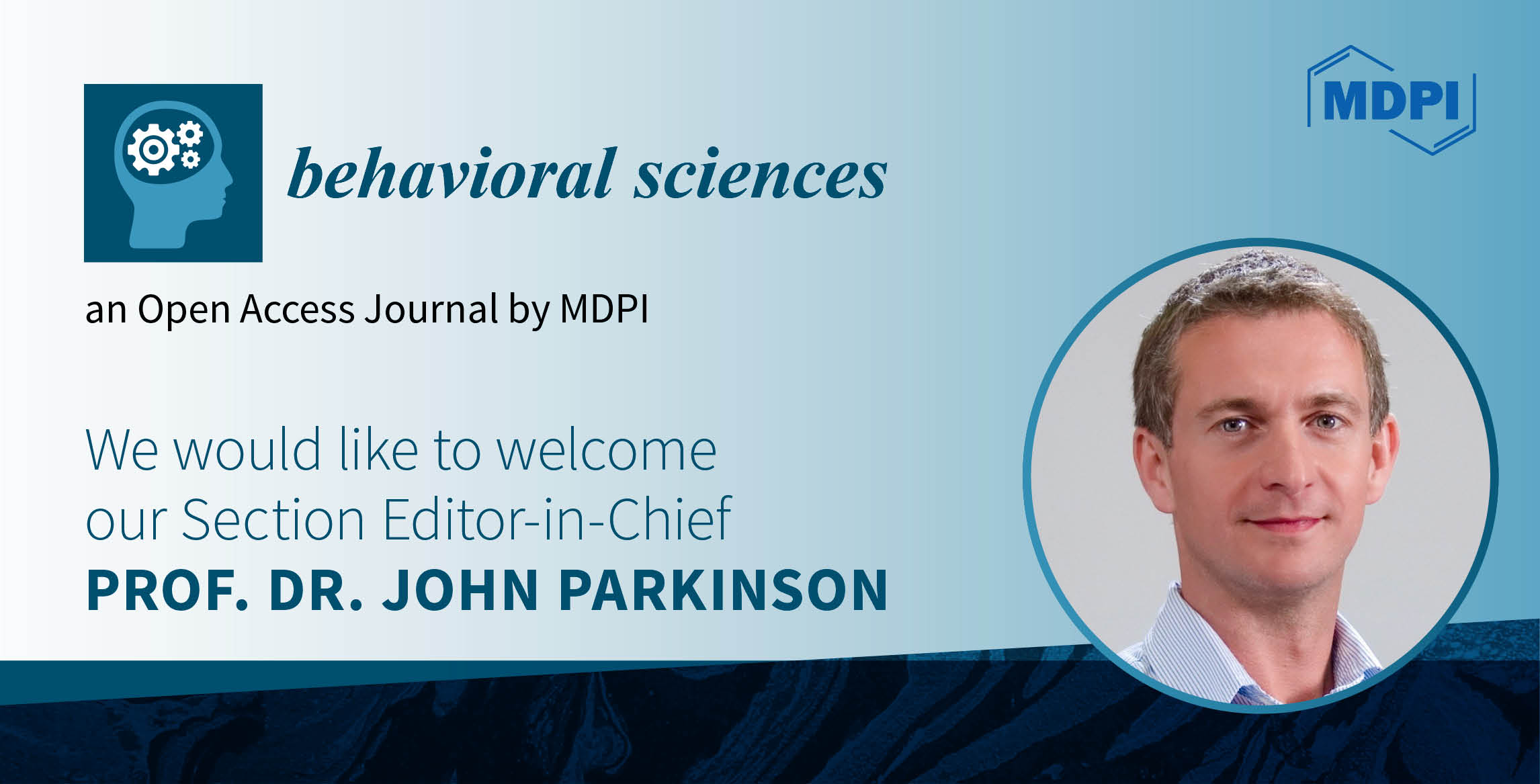Journal Description
Behavioral Sciences
Behavioral Sciences
is an international, peer-reviewed, open access journal on psychology, neuroscience, cognitive science, behavioral biology and behavioral genetics published monthly online by MDPI.
- Open Access— free for readers, with article processing charges (APC) paid by authors or their institutions.
- High Visibility: indexed within Scopus, SSCI (Web of Science), PubMed, PMC, and other databases.
- Journal Rank: JCR - Q2 (Psychology, Multidisciplinary) / CiteScore - Q2 (Development)
- Rapid Publication: manuscripts are peer-reviewed and a first decision is provided to authors approximately 21.5 days after submission; acceptance to publication is undertaken in 2.6 days (median values for papers published in this journal in the second half of 2023).
- Recognition of Reviewers: reviewers who provide timely, thorough peer-review reports receive vouchers entitling them to a discount on the APC of their next publication in any MDPI journal, in appreciation of the work done.
Impact Factor:
2.6 (2022);
5-Year Impact Factor:
3.2 (2022)
Latest Articles
Maternal Involvement in Education, Bicultural Acceptance, and School Adjustment: An Autoregressive Cross-Lagged Modeling Study among Adolescents from Multicultural Families
Behav. Sci. 2024, 14(5), 368; https://doi.org/10.3390/bs14050368 - 26 Apr 2024
Abstract
This study examined the associations between maternal involvement in education and bicultural acceptance and school adjustment during the first year of middle school among adolescents from Korean multicultural families as well as the reciprocal relationships between bicultural acceptance and school adjustment during the
[...] Read more.
This study examined the associations between maternal involvement in education and bicultural acceptance and school adjustment during the first year of middle school among adolescents from Korean multicultural families as well as the reciprocal relationships between bicultural acceptance and school adjustment during the three years of middle school. The present study used three-wave longitudinal data of 1185 dyads of adolescents (50.8% girls; mean age = 12.96 ± 0.35 years at the first wave) and their immigrant mothers (mean age = 43.54 ± 5.19 years at the first wave), who participated in the Multicultural Adolescents Panel Study. An autoregressive cross-lagged modeling analysis revealed that maternal involvement in education was significantly and positively associated with adolescents’ bicultural acceptance and school adjustment in the first year of middle school. Individual levels of bicultural acceptance and school adjustment among adolescents remained moderately stable over the three years. Whereas the positive effects of school adjustment on bicultural acceptance were significant over time, the effects of bicultural acceptance on school adjustment were not. Finally, this study highlights the roles of intervention programs (e.g., parent and multicultural education) in facilitating maternal involvement in education and school adjustment as well as in increasing bicultural acceptance among minority youths.
Full article
(This article belongs to the Special Issue Effects of the Interaction of Parenting Practices and Environment on Children’s Outcomes)
Open AccessArticle
Evidence-Based Reconstruction of Memories of a Disdainful Hookup: Identifying Risk Factors and Preventing Further Victimization
by
Lidia Puigvert, Ramon Flecha and Sandra Racionero-Plaza
Behav. Sci. 2024, 14(5), 367; https://doi.org/10.3390/bs14050367 - 26 Apr 2024
Abstract
Autobiographical memories of close relationships have been shown to have strong influence in health and life. Yet, there is no research published about longitudinal memory reconstruction of violent sporadic relationships while reading and discussing scientific evidence on gender violence victimization. This article presents
[...] Read more.
Autobiographical memories of close relationships have been shown to have strong influence in health and life. Yet, there is no research published about longitudinal memory reconstruction of violent sporadic relationships while reading and discussing scientific evidence on gender violence victimization. This article presents a novel case of the reconstruction throughout time of the memory of a disdainful hookup experienced by a young woman. The victim’s diary and an interview were the sources of data collection. The analytical categories were developed in dialogue with the participant. The results indicate that, as the subject learned scientific evidence on gender violence in sporadic relationships, she progressively recalled details of the episode that she had self-censored before, became aware of the very violent nature of the hookup, rejected the relationship, and freed her desire for satisfactory romantic relationships.
Full article
(This article belongs to the Special Issue Exploring Risk Behaviors in Adolescents’ and Young Adults’ Romantic Relationships)
Open AccessArticle
Flourishing in Education: Psychometric Properties of the Flourishing Scale in a Sample of Romanian Teachers
by
Beatrice Adriana Balgiu and Andrei Simionescu-Panait
Behav. Sci. 2024, 14(5), 366; https://doi.org/10.3390/bs14050366 - 26 Apr 2024
Abstract
The Flourishing Scale (FS) is one of the most well-known tools for assessing psychological flourishing. However, its psychometric properties have been little analyzed in the case of teachers. This study aimed to examine the validity of the scale in the case of a
[...] Read more.
The Flourishing Scale (FS) is one of the most well-known tools for assessing psychological flourishing. However, its psychometric properties have been little analyzed in the case of teachers. This study aimed to examine the validity of the scale in the case of a sample of Romanian teachers and to analyze the latter’s level of flourishing. In this regard, 323 Romanian teachers from the pre-university education system were recruited. Confirmatory factor analysis (CFA) was used to assess the construct validity of the scale, and Cronbach’s α and McDonald’s ω indices were used to assess internal consistency. The convergent validity was assessed by associating the FS with other instruments related to well-being: the Mental Health Continuum-Short Form and the Scale of Positive and Negative Experience. Network analysis was performed to examine the items that are particularly influential in the scale. As a result of the CFA, the one-factor structure of the scale was certified (χ2/df = 1.39; CFI = 0.99; RMSEA = 0.035). The internal consistency is excellent (both α and ω = 0.89). The FS correlates with both of the scales which operationalize components of well-being. The teachers’ flourishing level is above average. The network approach showed that the items related to self-acceptance, optimism, and respect had the highest indicators of centrality, and the item related to supportive social relationships was the least informative in the network. For the male subsample, flourishing means optimism about the future and respect for others, and for the female respondents, it is related to self-acceptance and respect. The results provide support for using the scale in assessing flourishing among teachers.
Full article
(This article belongs to the Special Issue Assessment Instruments for Measuring Individual and Organizational Wellbeing)
►▼
Show Figures
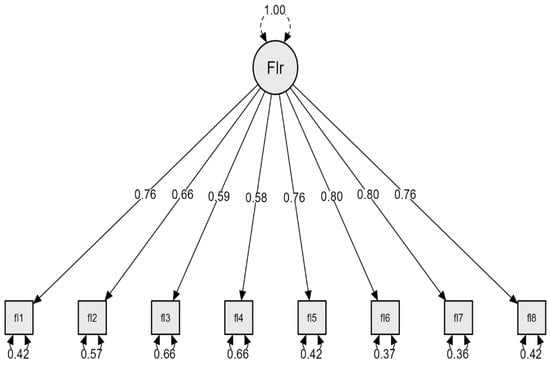
Figure 1
Open AccessArticle
Differences in Cold and Hot Decision-Making between Gambling and Other Addictions
by
Sara Meca, Francisco Molins, Maragda Puigcerver and Miguel Ángel Serrano
Behav. Sci. 2024, 14(5), 365; https://doi.org/10.3390/bs14050365 - 25 Apr 2024
Abstract
Behavioral and biological addictions can impair decision-making processes, mainly by means of a dysfunction in brain regions associated with reward and frontal areas that may lead to disadvantageous choices. Understanding these differences helps establish appropriate terminology and enhances our ability to recognize, prevent,
[...] Read more.
Behavioral and biological addictions can impair decision-making processes, mainly by means of a dysfunction in brain regions associated with reward and frontal areas that may lead to disadvantageous choices. Understanding these differences helps establish appropriate terminology and enhances our ability to recognize, prevent, and treat these disorders effectively. Thus, while behavioral and biological addictions share some common elements, their underlying mechanisms and impact on decision-making vary significantly. Moreover, decision-making can be measured through questionnaires (stable or “cold” measures) or dynamic tasks (hot decisions) such as the Iowa Gambling Task (IGT), which can reflect different dimensions of this process. The aim of this study was to compare decision-making from different perspectives—stable and dynamic measures—in patients with gambling addiction (GA) (n = 42) and patients with biological addictions (BA) (n = 43). Decision-making was assessed using GDMS (Decisional Styles) and the LCT (Loss Aversion), as cold decision-making measures, as well as a hot or situational task called the IGT (Iowa Gambling Task). The results revealed that GA patients exhibited lower rational style scores compared to BA patients. Additionally, GA patients showed greater loss aversion according to the LCT questionnaire. On the other hand, when analyzing the IGT results, no differences were observed between groups in the overall IG index, learning curves, or the loss aversion parameter. However, GA patients showed higher sensitivity to feedback and less consistency in their decisions. These findings highlight the differences between different types of addictions and highlight the importance of considering the type of measure used to evaluate decision-making.
Full article
Open AccessArticle
The Relationship between Addictive Use of Short-Video Platforms and Marital Satisfaction in Older Chinese Couples: An Asymmetrical Dyadic Process
by
Jinsong Deng, Menmen Wang, Weiqi Mu, Siying Li, Ninghao Zhu, Xiong Luo, Lan Yi, Yahan Wu, Kexin Wang and Mingjie Zhou
Behav. Sci. 2024, 14(5), 364; https://doi.org/10.3390/bs14050364 - 25 Apr 2024
Abstract
Increasing evidence indicates that the addictive use of social media can have a detrimental effect on marital satisfaction, due mainly to the decrease in time and focus given to one’s spouse. However, the impact of social media use among older couples remains under-investigated,
[...] Read more.
Increasing evidence indicates that the addictive use of social media can have a detrimental effect on marital satisfaction, due mainly to the decrease in time and focus given to one’s spouse. However, the impact of social media use among older couples remains under-investigated, and the research that does exist relies on individual-level data that do not allow the exploration of the dynamics between the dyadic partners. Therefore, the present study focused on older adults’ use of short-video platforms, as these have been shown to be particularly addictive for older adults. A sample of 264 older couples was gathered (mean age = 68.02, SD = 8.68), and both spouses completed surveys reporting addictive use of short-video platforms, negative emotions, and marital satisfaction. Using an actor–partner interdependence model, we found an asymmetrical dyadic process in that the addictive use of short-video platforms by the wives was not only related to their own negative emotions, but also those of their spouse, as well as to decreased marital satisfaction. Meanwhile, addictive use by the husbands seemed to relate only to their own increased negative emotions, as well as to decreased marital satisfaction. Together, the findings from this study reveal dyadic dynamics with delineated pathways through which the addictive use of short-video platforms can damage older couples’ interactive processes and marital satisfaction.
Full article
(This article belongs to the Section Social Psychology)
Open AccessArticle
Differential Risk: Gender and Racial Differences in the Relationship between Trauma, Discrimination, and Schizotypy
by
Mahogany A. Monette, Madisen T. Russell, Danielle B. Abel, Jarrett T. Lewis, Jessica L. Mickens, Evan J. Myers, Megan M. Hricovec, David C. Cicero, J. Wolny, William P. Hetrick, Michael D. Masucci, Alex S. Cohen, Christopher J. Burgin, Thomas R. Kwapil and Kyle S. Minor
Behav. Sci. 2024, 14(5), 363; https://doi.org/10.3390/bs14050363 - 25 Apr 2024
Abstract
Traumatic experiences are associated with increased experiences of positive schizotypy. This may be especially important for People of Color, who experience higher rates of trauma and racial discrimination. No study to date has examined how racial disparities in traumatic experiences may impact schizotypy.
[...] Read more.
Traumatic experiences are associated with increased experiences of positive schizotypy. This may be especially important for People of Color, who experience higher rates of trauma and racial discrimination. No study to date has examined how racial disparities in traumatic experiences may impact schizotypy. Furthermore, of the studies that have examined the relationship between trauma and schizotypy, none have examined racial discrimination as a potential moderator. The present study examined if racial discrimination moderates the relationship between trauma and multidimensional (positive, negative, and disorganized) schizotypy. In a sample of 770 college students, we conducted chi-squared analyses, analyses of variance, and stepwise regressions. We found that Black students experienced significantly higher racial discrimination and trauma than Latinx and Asian students. Furthermore, Black and Latinx students experienced significantly more multidimensional schizotypy items than Asian students. Trauma and racial discrimination explained 8 to 23% of the variance in each dimension of schizotypy. Racial discrimination did not moderate the relationships between trauma and multidimensional schizotypy. Our findings suggest that we need to examine risk factors that may prevent recovery from psychotic disorders. Additionally, disorganized schizotypy showed the most robust associations and may be a critical site of intervention.
Full article
(This article belongs to the Special Issue Prevention and Recovery in People with Schizophrenia and Related Disorders)
Open AccessArticle
How Does Digital Leadership Foster Employee Innovative Behavior: A Cognitive–Affective Processing System Perspective
by
Pengbin Gao and Yinghui Gao
Behav. Sci. 2024, 14(5), 362; https://doi.org/10.3390/bs14050362 - 25 Apr 2024
Abstract
Employee innovative behavior is crucial for organizations to engage in innovative activities and gain competitive advantages in the context of digital transformation. Despite many studies having focused on the relationship between leadership and employee innovative behavior, the role of digital leadership and the
[...] Read more.
Employee innovative behavior is crucial for organizations to engage in innovative activities and gain competitive advantages in the context of digital transformation. Despite many studies having focused on the relationship between leadership and employee innovative behavior, the role of digital leadership and the underlying mechanisms for employee innovative behavior remain unclear. Using the cognitive–affective processing system framework, the study investigated the dual mediating role of psychological empowerment and affective commitment between digital leadership and employee innovative behavior and the moderating role of a proactive personality in such relationships. Employing data from 359 employees, the study conducted structure equation modeling to examine the hypotheses. The results show that digital leadership influences employee innovative behavior through psychological empowerment but not affective commitment. Furthermore, a proactive personality does not moderate the direct effect of digital leadership on psychological empowerment and affective commitment or the indirect effect of digital leadership on employee innovative behavior. Theoretical and practical implications are discussed.
Full article
(This article belongs to the Section Organizational Behaviors)
Open AccessArticle
Burnout and Quality of Work Life among Physicians during Internships in Public Hospitals in Thailand
by
Vithawat Surawattanasakul, Wuttipat Kiratipaisarl and Penprapa Siviroj
Behav. Sci. 2024, 14(5), 361; https://doi.org/10.3390/bs14050361 - 25 Apr 2024
Abstract
Physicians are exposed to occupational stress and burnout, which have been identified as contributing to a decrease in the quality of work life (QWL). Thailand’s medical education program, consisting of a six-year curriculum with government tuition support followed by three years of internships,
[...] Read more.
Physicians are exposed to occupational stress and burnout, which have been identified as contributing to a decrease in the quality of work life (QWL). Thailand’s medical education program, consisting of a six-year curriculum with government tuition support followed by three years of internships, provides the context for this investigation. This study aimed to assess the QWL among intern physicians (IPs) in public hospitals and investigated the association between burnout and QWL. A cross-sectional study was conducted among 241 IPs in public hospitals in Thailand utilizing an online self-administered questionnaire. The questionnaire included a Thai version of a 25-item QWL scale and the Maslach Burnout Inventory—Human Services Survey for Medical Personnel. Data analysis was performed using multivariable logistic regression. A significant proportion of IPs experienced low to moderate QWL (72.6%), with low levels of home–work interface (39.4%) and employee engagement (38.6%). In the exploratory model, after adjusting for sex and age, IPs with high depersonalization and low personal accomplishment demonstrated an association with low QWL (adjusted OR, aOR 2.08, 95% CI 1.01 to 4.31; aOR 2.74, 95% CI 1.40 to 5.39). Healthcare organizations should regularly assess intern physicians’ QWL and burnout, prioritizing interventions; ensure reasonable work hours, schedule adjustments, and open communication; and develop support systems for cost-effective interventions. Further research on the dynamic relationship between burnout and QWL is crucial for targeted and culturally sensitive interventions.
Full article
(This article belongs to the Special Issue Stress, Anxiety, and Depression among Healthcare Workers)
Open AccessArticle
Latent Profile Analysis of Suicidal Ideation in Chinese Individuals with Bipolar Disorder
by
Yanmeng Pan, Huaizhi Wang, Yimeng Geng, Jianbo Lai and Shaohua Hu
Behav. Sci. 2024, 14(5), 360; https://doi.org/10.3390/bs14050360 - 25 Apr 2024
Abstract
►▼
Show Figures
Individuals with bipolar disorder (BD) have a greater suicide risk than the general population. In this study, we employed latent profile analysis (LPA) to explore whether Chinese individuals with different phases of BD differed at the levels of suicidal ideation. We recruited 517
[...] Read more.
Individuals with bipolar disorder (BD) have a greater suicide risk than the general population. In this study, we employed latent profile analysis (LPA) to explore whether Chinese individuals with different phases of BD differed at the levels of suicidal ideation. We recruited 517 patients. Depressive symptoms were measured using the 24-item Hamilton Depression Rating Scale (HAMD-24), and manic symptoms were evaluated using the Young Mania Rating Scale (YMRS). The extent of suicidal thoughts was determined through the Beck Scale for Suicide Ideation (BSSI). The scores of HAMD and YMRS were used to perform LPA. LPA categorized participants into three classes: one exhibiting severe depressive and mild manic symptomatology, another showing severe depressive and severe manic symptomatology, and the third one displaying severe depressive and intermediate manic symptomatology. Suicidal ideation levels were found to be remarkably elevated across all three classes. Additionally, the three classes showed no significant differences in terms of suicidal ideation. Our research confirms the link between depressive symptoms and suicide, independent of the manic symptoms. These findings carry meaning as they provide insight into the suicide risk profiles within different phases of BD.
Full article
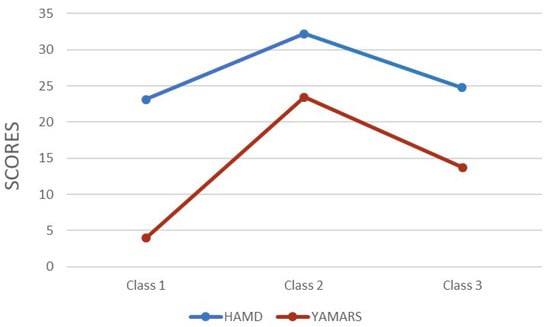
Figure 1
Open AccessArticle
How COVID-19 Information Fear of Missing out Increases the Risk of Depression and Anxiety: Roles of Resilience and Personality Types
by
Yuling Tang, Binbin Wang, Chunyan Xu and Xiaochun Xie
Behav. Sci. 2024, 14(5), 359; https://doi.org/10.3390/bs14050359 - 25 Apr 2024
Abstract
►▼
Show Figures
During major health emergencies (e.g., the COVID-19 pandemic) people often fear missing relevant information. COVID-19 information fear of missing out (FOMO) is a phenomenon where people feel anxiety about losing control of COVID-19-related information. The present study aimed to examine how COVID-19 information
[...] Read more.
During major health emergencies (e.g., the COVID-19 pandemic) people often fear missing relevant information. COVID-19 information fear of missing out (FOMO) is a phenomenon where people feel anxiety about losing control of COVID-19-related information. The present study aimed to examine how COVID-19 information FOMO relates to mental health (e.g., depression and anxiety), the mediating role of resilience, and the moderating role of personality types during the COVID-19 pandemic. We surveyed 1442 Chinese undergraduates (Mage = 21.68 ± 2.35 years) on the relevant variables. The results showed that COVID-19 information FOMO was positively associated with depression and anxiety, and resilience mediated these associations. Latent profile analysis (LPA) identified three personality types (undercontrolled, adaptive, and overcontrolled). Personality types moderated the mediation models, in which the indirect effects were only significant in the participants classified in the undercontrolled group rather than the participants classified in the other two groups. This study told us that undergraduates’ mental health, particularly that of the undercontrollers, should be paid attention to when responding to a major public health emergency (e.g., the COVID-19 pandemic).
Full article
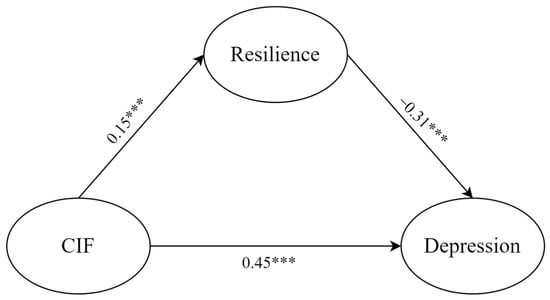
Figure 1
Open AccessArticle
Body Awareness as a Protective Factor against Suicidal Orientations in College Students
by
Olga Lucia Montoya-Hurtado, Renato Sobral-Monteiro-Junior, Cyndi Yacira Meneses-Castaño, Consuelo Sancho-Sánchez, Antonio Martínez-Sabater, Pilar Andrés-Olivera, Pilar Sanchez-Conde, Jesús Pérez Sánchez-Toledo, José María Criado-Gutiérrez, Laura Criado-Pérez, Juan Luis Sánchez-González and Raúl Juárez-Vela
Behav. Sci. 2024, 14(5), 358; https://doi.org/10.3390/bs14050358 - 25 Apr 2024
Abstract
In this study, binary logistic regression and linear regression analyses were used to examine the relationship between interoceptive body awareness and suicidal orientation among Colombian university students. Additionally, the bootstrap technique was employed to resample and estimate the distribution of the data. The
[...] Read more.
In this study, binary logistic regression and linear regression analyses were used to examine the relationship between interoceptive body awareness and suicidal orientation among Colombian university students. Additionally, the bootstrap technique was employed to resample and estimate the distribution of the data. The results support the idea that greater interoceptive awareness may protect against suicidal orientation by improving emotional regulation. An inverse relationship was found between interoceptive awareness and suicidal ideation. These findings align with previous literature emphasizing the importance of body awareness for emotional well-being. Further longitudinal research is needed to explore this relationship more deeply.
Full article
(This article belongs to the Topic Health Questionaries)
►▼
Show Figures
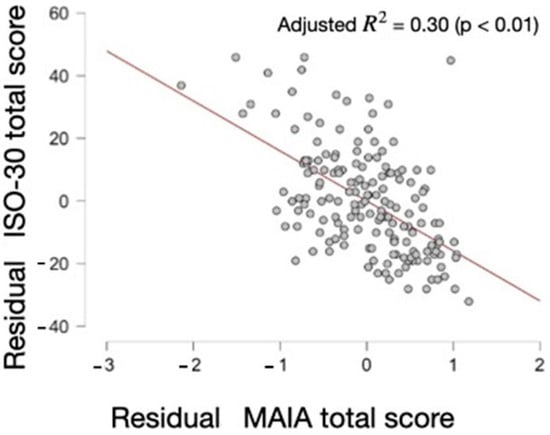
Figure 1
Open AccessArticle
Early Support for People Who Hear Voices: Exploratory Research on Family Medicine Physicians’ Clinical Practice and Beliefs
by
Antonio Iudici, Giulia Alecu, Maria Quarato and Jessica Neri
Behav. Sci. 2024, 14(5), 357; https://doi.org/10.3390/bs14050357 - 25 Apr 2024
Abstract
Nowadays the phenomenon of hearing voices represents a very fertile and discussed field of research. In psychological and psychiatric fields, the phenomenon has been described as a normal phenomenon, but also as a prodromal stage and as a symptom of psychosis. Through a
[...] Read more.
Nowadays the phenomenon of hearing voices represents a very fertile and discussed field of research. In psychological and psychiatric fields, the phenomenon has been described as a normal phenomenon, but also as a prodromal stage and as a symptom of psychosis. Through a qualitative research methodology, the aim was to explore how family medicine physicians configure the phenomenon and its clinical and interactive implications. The present research involved 35 family medicine physicians as figures of primary importance in the approach toward people who start to hear voices. Semi-structured interviews have been used and they have been analyzed by the method of discourse analysis. The results show a remarkable difficulty in understanding the phenomenon in all its complexity and the tendency to consider it a symptom or a prodromal stage of psychopathology. Increasing the knowledge of doctors on the subject is necessary so that their evaluation and choice of intervention match the needs of each patient. We also discuss the importance of promoting the knowledge of the potential meanings taken on by the voices in the context of the personal and family background of the individual hearer, and of collaboration with other relevant professionals and services.
Full article
(This article belongs to the Special Issue The Shaping of Services for Health Promotion)
Open AccessArticle
The Impact of the Global Pandemic on Veterans with Serious Mental Illness (SMI): Healthcare Utilization and Mortality
by
Isabella Soreca, Monique Boudreaux-Kelly, Yeon-Jung Seo and Gretchen Haas
Behav. Sci. 2024, 14(5), 356; https://doi.org/10.3390/bs14050356 - 24 Apr 2024
Abstract
Background: Individuals with serious mental illness (SMI) experience barriers to accessing and engaging with healthcare, which may have been exacerbated during the emergence of the global pandemic and the rapid shift to telemedicine platforms, substantially decreasing healthcare utilization for non-COVID-19 disorders. Important repercussions
[...] Read more.
Background: Individuals with serious mental illness (SMI) experience barriers to accessing and engaging with healthcare, which may have been exacerbated during the emergence of the global pandemic and the rapid shift to telemedicine platforms, substantially decreasing healthcare utilization for non-COVID-19 disorders. Important repercussions on morbidity and mortality may be seen in the months and years to come, which may disproportionately affect high-risk populations, such as patients with SMI, with reduced access to technology platforms. In this study, we explored the impact of the pandemic on healthcare utilization and all-cause mortality rate in SMI compared to non-SMI individuals for the months of March–September 2020 and the same two quarters in 2019. Methods: Data were obtained from the VA Corporate Data Warehouse (CDW), a data repository from clinical and administrative VA systems. The sample included veterans with ≥1 outpatient clinical encounter nationally between 1 January 2019 and 31 December 2020. Results: The cohort for this study included 1,018,047 veterans receiving care through the Veterans Health Administration between 2019 and 2020. Of those, 339,349 had a diagnosis of SMI. Patients with SMI had a significantly larger pre–post-pandemic decrease in outpatient (49.7%, p < 0.001), inpatient (14.4%, p < 0.001), and ED (14.5%, p < 0.001) visits compared to non-SMI patients. Overall, 3752 (1.59%) veterans without SMI and 4562 (1.93%) veterans with SMI died during our observation period. Veterans without SMI who died during the observation period were more likely to have had a positive COVID-19 test compared to veterans with SMI. Unadjusted analyses showed that veterans with SMI were approximately 2.5 times more likely to die than veterans without SMI during the first 6 months of the pandemic, compared to the same two quarters of the previous year. However, after adjustment by pertinent covariates, the predictors associated with an increased risk of death from SMI were older age, being male, a higher CAN score, more inpatient stays in the pre period compared to post, and a positive COVID-19 test. Discussion: Consistent with our initial hypothesis, all the indices of healthcare utilization, namely the number of outpatient, inpatient, and ED visits, significantly decreased between pre- and post-pandemic and did more so for veterans with SMI, despite having more chronic medical illnesses and being prescribed more medications than veterans without SMI. On the other hand, while mortality was greater post-pandemic, factors such as age, morbidity, and having a positive COVID-19 test predicted mortality above and beyond having an SMI diagnosis.
Full article
(This article belongs to the Special Issue Prevention and Recovery in People with Schizophrenia and Related Disorders)
Open AccessArticle
Visual Field Restriction in the Recognition of Basic Facial Expressions: A Combined Eye Tracking and Gaze Contingency Study
by
Melina Boratto Urtado, Rafael Delalibera Rodrigues and Sergio Sheiji Fukusima
Behav. Sci. 2024, 14(5), 355; https://doi.org/10.3390/bs14050355 - 23 Apr 2024
Abstract
Uncertainties and discrepant results in identifying crucial areas for emotional facial expression recognition may stem from the eye tracking data analysis methods used. Many studies employ parameters of analysis that predominantly prioritize the examination of the foveal vision angle, ignoring the potential influences
[...] Read more.
Uncertainties and discrepant results in identifying crucial areas for emotional facial expression recognition may stem from the eye tracking data analysis methods used. Many studies employ parameters of analysis that predominantly prioritize the examination of the foveal vision angle, ignoring the potential influences of simultaneous parafoveal and peripheral information. To explore the possible underlying causes of these discrepancies, we investigated the role of the visual field aperture in emotional facial expression recognition with 163 volunteers randomly assigned to three groups: no visual restriction (NVR), parafoveal and foveal vision (PFFV), and foveal vision (FV). Employing eye tracking and gaze contingency, we collected visual inspection and judgment data over 30 frontal face images, equally distributed among five emotions. Raw eye tracking data underwent Eye Movements Metrics and Visualizations (EyeMMV) processing. Accordingly, the visual inspection time, number of fixations, and fixation duration increased with the visual field restriction. Nevertheless, the accuracy showed significant differences among the NVR/FV and PFFV/FV groups, despite there being no difference in NVR/PFFV. The findings underscore the impact of specific visual field areas on facial expression recognition, highlighting the importance of parafoveal vision. The results suggest that eye tracking data analysis methods should incorporate projection angles extending to at least the parafoveal level.
Full article
(This article belongs to the Section Cognition)
►▼
Show Figures
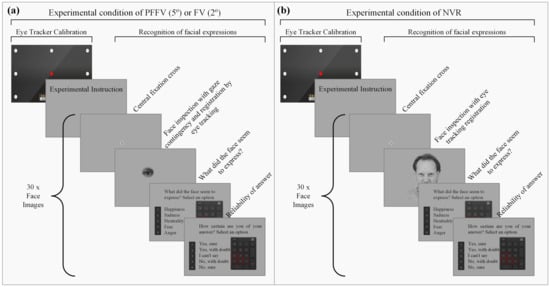
Figure 1
Open AccessArticle
Music Therapy Assessment for Older Adults: Descriptive Mixed-Methods Study
by
Amy Clements-Cortés
Behav. Sci. 2024, 14(5), 354; https://doi.org/10.3390/bs14050354 - 23 Apr 2024
Abstract
Background: The purpose of this inquiry was to test the new ‘Music Therapy Assessment for Older Adults’ (MTAOA) tool in Canada and the United States, and to establish its content and predictive utility. Methods: A pilot study using an explanatory descriptive methods design
[...] Read more.
Background: The purpose of this inquiry was to test the new ‘Music Therapy Assessment for Older Adults’ (MTAOA) tool in Canada and the United States, and to establish its content and predictive utility. Methods: A pilot study using an explanatory descriptive methods design was chosen; n = 18 music therapists completed an online survey about their experiences in administering the assessment and 50% (n = 9) were invited for a follow-up interview. Results: The results indicated that the MTAOA was a beneficial assessment tool that contained relevant domains (89%) to develop a music therapy treatment plan; 89% of music therapists also noted they would continue to use and recommend the MTAOA. The data produced beneficial information that were used to revise the assessment form to ensure inclusive language and reduce any potential inherent or unconscious biases. Conclusions: Future research is needed to assess the utility of the revised MTAOA in other global regions where music therapists work with older adults.
Full article
(This article belongs to the Special Issue Innovations in Music Based Interventions for Psychological Wellbeing)
Open AccessArticle
Understanding and Perception of Automated Text Generation among the Public: Two Surveys with Representative Samples in Germany
by
Angelica Lermann Henestrosa and Joachim Kimmerle
Behav. Sci. 2024, 14(5), 353; https://doi.org/10.3390/bs14050353 - 23 Apr 2024
Abstract
►▼
Show Figures
Automated text generation (ATG) technology has evolved rapidly in the last several years, enabling the spread of content produced by artificial intelligence (AI). In addition, with the release of ChatGPT, virtually everyone can now create naturally sounding text on any topic. To optimize
[...] Read more.
Automated text generation (ATG) technology has evolved rapidly in the last several years, enabling the spread of content produced by artificial intelligence (AI). In addition, with the release of ChatGPT, virtually everyone can now create naturally sounding text on any topic. To optimize future use and understand how humans interact with these technologies, it is essential to capture people’s attitudes and beliefs. However, research on ATG perception is lacking. Based on two representative surveys (March 2022: n1 = 1028; July 2023: n2 = 1013), we aimed to examine the German population’s concepts of and attitudes toward AI authorship. The results revealed a preference for human authorship across a wide range of topics and a lack of knowledge concerning the function, data sources, and responsibilities of ATG. Using multiple regression analysis with k-fold cross-validation, we identified people’s attitude toward using ATG, performance expectancy, general attitudes toward AI, and lay attitude toward ChatGPT and ATG as significant predictors of the intention to read AI-written texts in the future. Despite the release of ChatGPT, we observed stability across most variables and minor differences between the two survey points regarding concepts about ATG. We discuss the findings against the backdrop of the ever-increasing availability of automated content and the need for an intensive societal debate about its chances and limitations.
Full article

Figure 1
Open AccessArticle
Self-Control, Openness, Personal Need for Structure and Compensatory Control Change: A Serial Mediation Investigation
by
Yuan Zhao, Yuying Wang, Liuqing Wei, Yu Ma, Yunyun Chen and Xuemin Zhang
Behav. Sci. 2024, 14(5), 352; https://doi.org/10.3390/bs14050352 - 23 Apr 2024
Abstract
In the aftermath of the COVID-19 pandemic, numerous studies have indicated that individuals are confronting a diminished sense of control. Compensatory control theory suggests that individuals strive to mitigate this loss by modifying their behavior. The present study aims to investigate the relationship
[...] Read more.
In the aftermath of the COVID-19 pandemic, numerous studies have indicated that individuals are confronting a diminished sense of control. Compensatory control theory suggests that individuals strive to mitigate this loss by modifying their behavior. The present study aims to investigate the relationship between self-control and compensatory control change during the COVID-19 pandemic, as well as the mediating effects of openness and the personal need for structure. Participants completed an online questionnaire consisting of Personal Need for Structure Scale, Self-Control Scale, Openness Scale and Compensatory Control Change Scale. The results showed that the compensatory control change increased after the outbreak. Moreover, a serial mediation was found: openness and the personal need for structure partially mediated the relationship between self-control and compensatory control change. The results indicate that the COVID-19 pandemic has led to an increase in compensatory control behaviors, especially among those with pronounced self-control. High self-control individuals are found to exhibit greater openness, reducing their personal need for structure, in effect enhancing their compensatory control change. These findings highlight the critical role of self-control in sustaining a sense of control, which is vital for understanding psychological health management in the context of public health events.
Full article
(This article belongs to the Section Social Psychology)
►▼
Show Figures
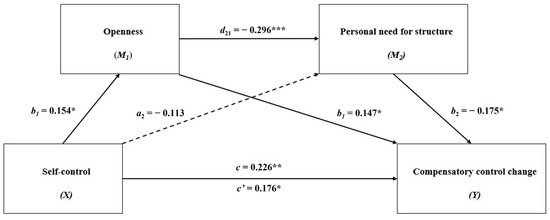
Figure 1
Open AccessArticle
The Effects of the COVID-19 Pandemic on Healthcare Providers’ Mental Health: Experiences at Kenyatta National Hospital, Kenya
by
Vallery Ogello, Nicholas Thuo, Phelix Okello, Njeri Wairimu, Paul Mwangi, Gakuo Maina, Harrison Mwenda, Paul Mutua, John Kinuthia, Linnet Ongeri, Nelly Mugo and Kenneth Ngure
Behav. Sci. 2024, 14(5), 351; https://doi.org/10.3390/bs14050351 - 23 Apr 2024
Abstract
Background: In 2020, healthcare providers were expected to provide care to individuals with coronavirus disease 2019 (COVID-19), putting them at risk of acquiring COVID-19. The possibility of acquiring poorly understood infectious diseases while providing care may have an impact on the mental health
[...] Read more.
Background: In 2020, healthcare providers were expected to provide care to individuals with coronavirus disease 2019 (COVID-19), putting them at risk of acquiring COVID-19. The possibility of acquiring poorly understood infectious diseases while providing care may have an impact on the mental health of providers. We conducted a study to explore the effects of COVID-19 on the mental health of healthcare providers. Methods: Between April and August 2021, we conducted in-depth interviews with 60 healthcare providers in the infectious disease unit (IDU) and other units of the hospital (non-IDU). The healthcare providers completed an online self-administered survey form with demographic data (age, sex, average income, and known contact with a COVID-19 patient). We used semi-structured interview guides to understand the healthcare providers’ lived experiences of stress, anxiety, depression, and their associated factors. We transcribed the interviews verbatim and coded and analyzed the transcripts to derive thematic concepts related to mental health experiences. Results: The healthcare providers had a median age of 37 years [IQR 20.0–58.0], and 56.7% were female, 30.0% nurses, 18.3% medical doctors, and 11.7% laboratory technologists. The healthcare providers reported increased stress during the pandemic, attributed to the high demand for patient care, changes in social life, and fear of COVID-19 infection. They also reported experiences of anxiety and depression as a result of limited knowledge at the beginning of the pandemic and the perception that “COVID-19 resulted in death”. Testing positive for COVID-19, high exposure to COVID-19 risks, and the death of patients and colleagues reportedly affected the healthcare providers’ mental health. Additionally, the healthcare providers reported mental health support through debriefing meetings, peer-to-peer support, and psychological counseling, with privacy and confidentiality concerns. Conclusions: Healthcare providers faced mental health issues such as stress and anxiety while taking care of COVID-19 patients. An effective mental health response requires institutional practices that address context-specific challenges such as privacy and confidentiality.
Full article
(This article belongs to the Section Health Psychology)
Open AccessArticle
Adaptation and Validation of the 3 × 2 Achievement Goals Questionnaire in a Population of Athletes
by
Cristina García-Romero, Elkin Eduardo Roldan-Aguilar, Carlos Alberto Hurtado-Castaño, Josune Rodríguez-Negro and Oliver Ramos-Álvarez
Behav. Sci. 2024, 14(4), 350; https://doi.org/10.3390/bs14040350 - 22 Apr 2024
Abstract
(1) Background: Sport goals, although widely recognised as crucial for motivation and performance in sport, are multifaceted and can be difficult to measure directly. The present research aims to validate the 3 × 2 achievement goals questionnaire of Mascret in Spanish in a
[...] Read more.
(1) Background: Sport goals, although widely recognised as crucial for motivation and performance in sport, are multifaceted and can be difficult to measure directly. The present research aims to validate the 3 × 2 achievement goals questionnaire of Mascret in Spanish in a population of athletes. (2) Method: By using a latent factor approach, it is possible to identify the underlying dimensions of these goals and to better understand how they are structured. For this purpose, this questionnaire has been translated and compared with the life satisfaction scale. An exploration of the multifaceted nature of sport goals has been carried out using structural equation modelling. A total of 580 athletes (463 males and 216 females, M = 21.5, SD = 2.36) from different sport disciplines and from 12 autonomous communities in Spain participated in the research. (3) Results: The results show that the questionnaire presents a high scale reliability and that all items contribute significantly to the internal consistency of the scale. (4) Conclusions: The adaptation of this scale to the Spanish population of athletes can be a valid and useful tool to measure and understand motivation and goals in the sport context.
Full article
(This article belongs to the Special Issue Physical Activity for Psychological and Cognitive Development)
►▼
Show Figures

Figure 1
Open AccessReview
Rest to Promote Learning: A Brain Default Mode Network Perspective
by
Wei Luo, Biao Liu, Ying Tang, Jingwen Huang and Ji Wu
Behav. Sci. 2024, 14(4), 349; https://doi.org/10.3390/bs14040349 - 22 Apr 2024
Abstract
The brain often switches freely between focused attention and divergent thinking, and the Default Mode Network (DMN) is activated during brain rest. Since its discovery, the DMN, together with its function and characteristics, indicates that learning does not stop when the brain “rests”.
[...] Read more.
The brain often switches freely between focused attention and divergent thinking, and the Default Mode Network (DMN) is activated during brain rest. Since its discovery, the DMN, together with its function and characteristics, indicates that learning does not stop when the brain “rests”. Therefore, DMN plays an important role in learning. Neural activities such as beta wave rhythm regulation, “subconscious” divergence thinking mode initiation, hippocampal function, and neural replay occur during default mode, all of which explains that “rest” promotes learning. This paper summarized the function and neural mechanism of DMN in learning and proposed that the DMN plays an essential role in learning, which is that it enables rest to promote learning.
Full article
(This article belongs to the Special Issue Neuroscience and Education: A Fruitful Partnership)
►▼
Show Figures
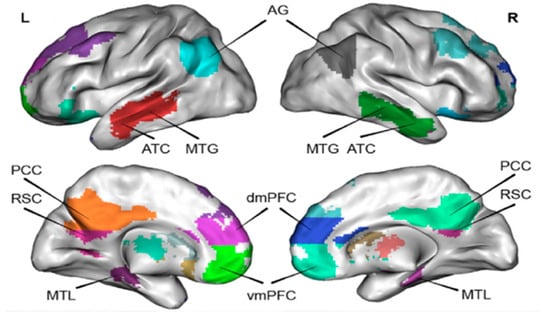
Figure 1

Journal Menu
► ▼ Journal Menu-
- Behavioral Sciences Home
- Aims & Scope
- Editorial Board
- Reviewer Board
- Topical Advisory Panel
- Instructions for Authors
- Special Issues
- Topics
- Sections
- Article Processing Charge
- Indexing & Archiving
- Editor’s Choice Articles
- Most Cited & Viewed
- Journal Statistics
- Journal History
- Journal Awards
- Editorial Office
Journal Browser
► ▼ Journal BrowserHighly Accessed Articles
Latest Books
E-Mail Alert
News
Topics
Topic in
Behavioral Sciences, Children, Healthcare, IJERPH, Nutrients
Economics of Public Health: Assessment of Health Interventions
Topic Editors: Ce Shang, Amanda J. Quisenberry, Yingning WangDeadline: 30 June 2024
Topic in
AI, Behavioral Sciences, EJIHPE
The Future of AI and Education: Chat GPT on Learning and Teaching Behaviours
Topic Editors: Xuesong Zhai, Andreja Istenic StarcicDeadline: 19 August 2024
Topic in
Algorithms, Behavioral Sciences, Societies, Technologies
Getting Insight into How Different Chatbots Answer the Same Questions and How Reliable They Are
Topic Editors: Eugène Loos, Loredana IvanDeadline: 1 September 2024
Topic in
Behavioral Sciences, COVID, EJIHPE, Societies, IJERPH, Healthcare
Cultural Differences and Migrant Mental Health in the Age of COVID-19
Topic Editors: Vsevolod Konstantinov, Andrés Alexis Ramírez CoronelDeadline: 30 September 2024

Conferences
Special Issues
Special Issue in
Behavioral Sciences
Domestic Violence during and after the Lockdown: The Shadow Pandemic
Guest Editors: Lisa Chiara Fellin, Arlene Louise VetereDeadline: 30 April 2024
Special Issue in
Behavioral Sciences
From Neuron to Neuropathology: Innovation in Conceptual Frameworks, Diagnosis, Interventions and Treatment
Guest Editors: Lynne A. Barker, Nick Morton, Rebecca DennissDeadline: 20 May 2024
Special Issue in
Behavioral Sciences
Understanding Youth Knowledge, Behaviors and Conditions concerning Mental Health
Guest Editors: Christine Grove, Ilaria Montagni, Joanne RiebschlegerDeadline: 31 May 2024
Special Issue in
Behavioral Sciences
The Role of Synaptic Plasticity in Animal Behavior and the Development of Psychiatric Disorders
Guest Editors: Jacopo Lamanna, Mattia FerroDeadline: 15 June 2024









